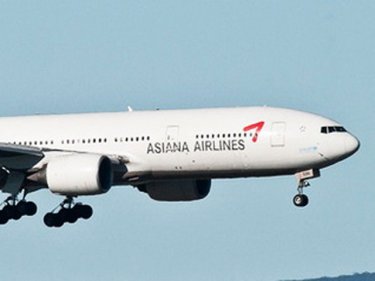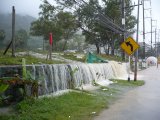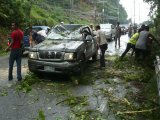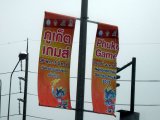The Asiana Airlines daily Boeing 767-260 flight from Seoul was due to land at Phuket International Airport at 1am on Friday but could not make contact with Phuket air traffic control.
With fuel running low and no response, the Korean aircraft's captain had no choice except to seek an alternative landing in Had Yai, several hundred kilometres south of Phuket.
The plane and its passengers flew back to Phuket early on Saturday. Talks have been taking place since about who pays the bill and what caused the problem with communication.
Although some sources claim the problem was caused by a Phuket storm, other sources have told Phuketwan it was a communications systems fault that had nothing to do with the weather.
It is understood that Aeronautical Radio of Thailand Ltd. has accepted responsibility and will foot the bill for the passengers' overnight stay in Had Yai and extra fuel.
A flight from Singapore to India was diverted to Phuket on Sunday in a dramatic attempt to save the life of a critically ill passenger but the 70-year-old man died.
Diversions and emergency landings add to the load at Phuket International Airport.
The facility was built for a maximum of 6.5 million arrivals and departures annually but handled 8.4 million last year and seems likely to cope with more than nine million this year.
Thirty-three airlines are involved in 160 flights in and out of Phuket each day. The facility is managed by Airports of Thailand.
A new international terminal that will boost capacity to 12.5 million arrivals and departures has slipped back from scheduled completion dates and is currently due to be finished in mid-2015.
















As owner of the airport hotel and a licensed radio amateur (and airport volunteer assistant), I can confirm that there was an announced systems fault on the date/time in question.
I was due to meet an arriving hotel guest and was parked outside of the airport and monitoring the air traffic control radio channels at the airport, in order to know exactly when the guest's flight would touch down.
From the air traffic conversations at that time, I understood that there was a radar malfunction, but not a radio communications malfunction. However, when the malfunction initially arose, it was not immediately clear to the air traffic controllers as to where the fault lay, and therefore they were busy doing radio checks, (and presumably not totally sure at that time that all radio comms channels were functioning correctly)
It's during this initial period when the fault arose that the Korean flight diverted. Subsequent flights that arrived that night at the airport were advised of the radar malfunction.
All the above details are taken from the ATC comms channels that I monitor on a daily basis.
Posted by Simon Luttrell on May 29, 2012 15:10